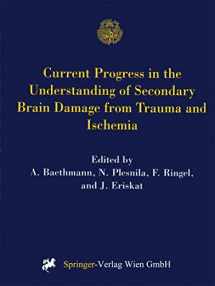
Current Progress in the Understanding of Secondary Brain Damage from Trauma and Ischemia: Proceedings of the 6th International Symposium: Mechanisms ... 1998 (Acta Neurochirurgica Supplement, 73)
ISBN-13:
9783211833131
ISBN-10:
3211833137
Edition:
1999
Author:
A. Baethmann, N. Plesnila, F. Ringel, J. Eriskat
Publication date:
1999
Publisher:
Springer
Format:
Hardcover
128 pages
FREE US shipping
Book details
ISBN-13:
9783211833131
ISBN-10:
3211833137
Edition:
1999
Author:
A. Baethmann, N. Plesnila, F. Ringel, J. Eriskat
Publication date:
1999
Publisher:
Springer
Format:
Hardcover
128 pages
Summary
Current Progress in the Understanding of Secondary Brain Damage from Trauma and Ischemia: Proceedings of the 6th International Symposium: Mechanisms ... 1998 (Acta Neurochirurgica Supplement, 73) (ISBN-13: 9783211833131 and ISBN-10: 3211833137), written by authors
A. Baethmann, N. Plesnila, F. Ringel, J. Eriskat, was published by Springer in 1999.
With an overall rating of 3.9 stars, it's a notable title among other
books. You can easily purchase or rent Current Progress in the Understanding of Secondary Brain Damage from Trauma and Ischemia: Proceedings of the 6th International Symposium: Mechanisms ... 1998 (Acta Neurochirurgica Supplement, 73) (Hardcover) from BooksRun,
along with many other new and used
books
and textbooks.
And, if you're looking to sell your copy, our current buyback offer is $0.3.
Description
Information is provided from the basic and clinical sciences on the mechanisms damaging the brain from trauma or ischemia. New aspects involve the endoplasmic reticulum, mitochondrial failure, pathobiology of axonal injury, molecular signals activating glial elements, or the emerging therapeutical role of neurotrophins. Experimental issues involve a better analysis of the ischemic penumbra, the salvagable tissue. Therapeutic contributions reach from the environmental influence to gene expression, including neuroprotection, such as hibernation – mother nature’s experiment – or hypothermia which is reported to induce cell swelling. Treatment issues deal also with thrombolysis and combination therapies, or with the clearance of adverse blood components – LDL/fibrinogen – by a novel procedure using heparin. Other highlights are discussing the specificities of pediatric vs. adult brain trauma, or the evolving role of the Apolipoprotein-E e4 gene in severe head injury. An update is also provided on an online assessment of the patient management during the pre- and early hospital phase in Southern Bavaria. The empirical observation of neuroworsening is analyzed in further details, whether this is a specificity autonomously driving the posttraumatic course. Finally, the unsolved question why drug trials in severe head injury have failed so far in view of the promising evidence from the laboratory is subjected to an expert analysis.


We would LOVE it if you could help us and other readers by reviewing the book
Book review

Congratulations! We have received your book review.
{user}
{createdAt}
by {truncated_author}


